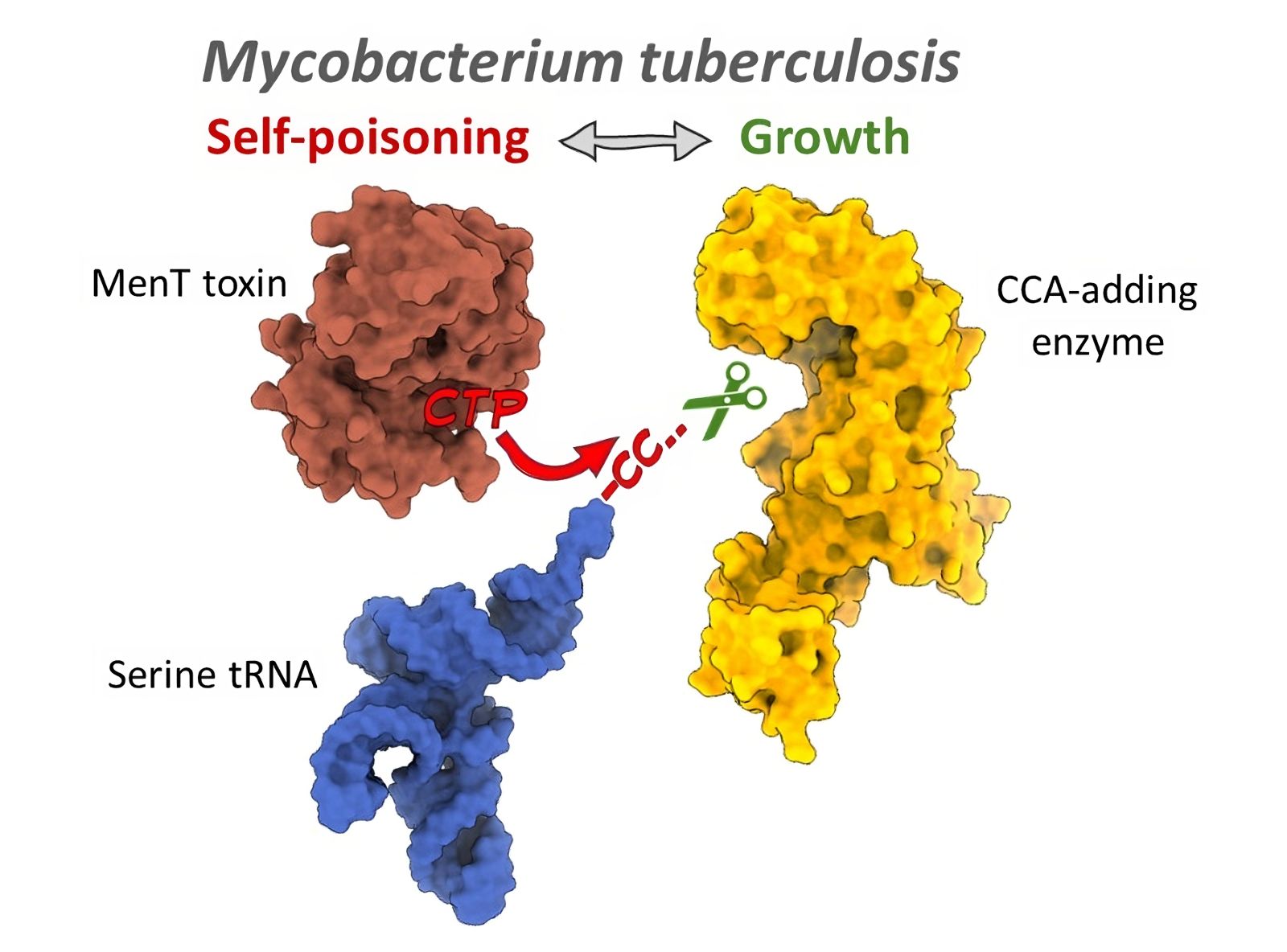Follow us on Google News (click on ☆)
In an article published in Nature Communications, scientists described the action mechanism of a toxin that blocks protein synthesis and demonstrated how the cell could detoxify itself. These findings pave the way for developing treatments based on the activation of this toxin.

Inhibition of serine transfer RNA by the MenT3 toxin and repair by CCA-adding enzyme tRNA nucleotidyltransferase (CCAse).
© Xibing Xu and Pierre Genevaux
Tuberculosis is the leading cause of mortality from a single infectious agent: the bacterium Mycobacterium tuberculosis. This bacterium primarily affects the lungs and spreads through airborne transmission. It can persist in the host for long periods in a non-replicating and drug-tolerant state, known as latent tuberculosis.
The rise of multidrug-resistant and extensively drug-resistant tuberculosis has significantly increased the need to identify new targets to develop new medications and innovative treatment strategies.
A promising avenue is based on specific systems present in Mycobacterium tuberculosis, called "toxin-antitoxin" (TA) systems. These systems are genetic elements composed of a harmful toxin (the poison) and an antitoxin that inhibits its activity (the antidote).
Under stress conditions, antitoxin inhibition is lifted, and the active toxins can target essential cellular processes or structures such as protein synthesis (translation), replication, metabolism, or cell wall synthesis, thereby inhibiting growth or killing the bacillus.
To date, the role of these TA systems in M. tuberculosis remains unknown, but the highly damaging nature of some toxins suggests that their antibacterial properties could be exploited to identify new therapeutic targets or directly as antimicrobial agents.
MenT3: a toxin of interest
In an article published in Nature Communications, scientists reported a significant discovery about one of these toxins, named MenT3.
This toxin blocks an essential process for bacterial survival: protein synthesis. It acts by modifying a part of transfer RNAs, which are indispensable molecules for assembling proteins. More specifically, it functions as a nucleotidyltransferase (NTase).
This means that it controls the growth of Mycobacterium tuberculosis by blocking protein production through a specific mechanism: it prevents the aminoacylation of transfer RNAs carrying serine by modifying the end that receives this amino acid.
The scientists also discovered a mechanism by which the MenT3 toxin can be neutralized. Another enzyme, CCAse, which is also a NTase but involved in tRNA maturation, can restore the ends of affected tRNAs, thereby detoxifying Mycobacterium tuberculosis.
This advancement opens new perspectives for developing innovative treatments based on activating the MenT3 toxin.
Reference:
Xu, X., Barriot, R., Voisin, B. et al.
Nucleotidyltransferase toxin MenT extends aminoacyl acceptor ends of serine tRNAs to control Mycobacterium tuberculosis growth.
Nat Commun 15, 9596 (2024).
https://www.nature.com/articles/s41467-024-53931-w